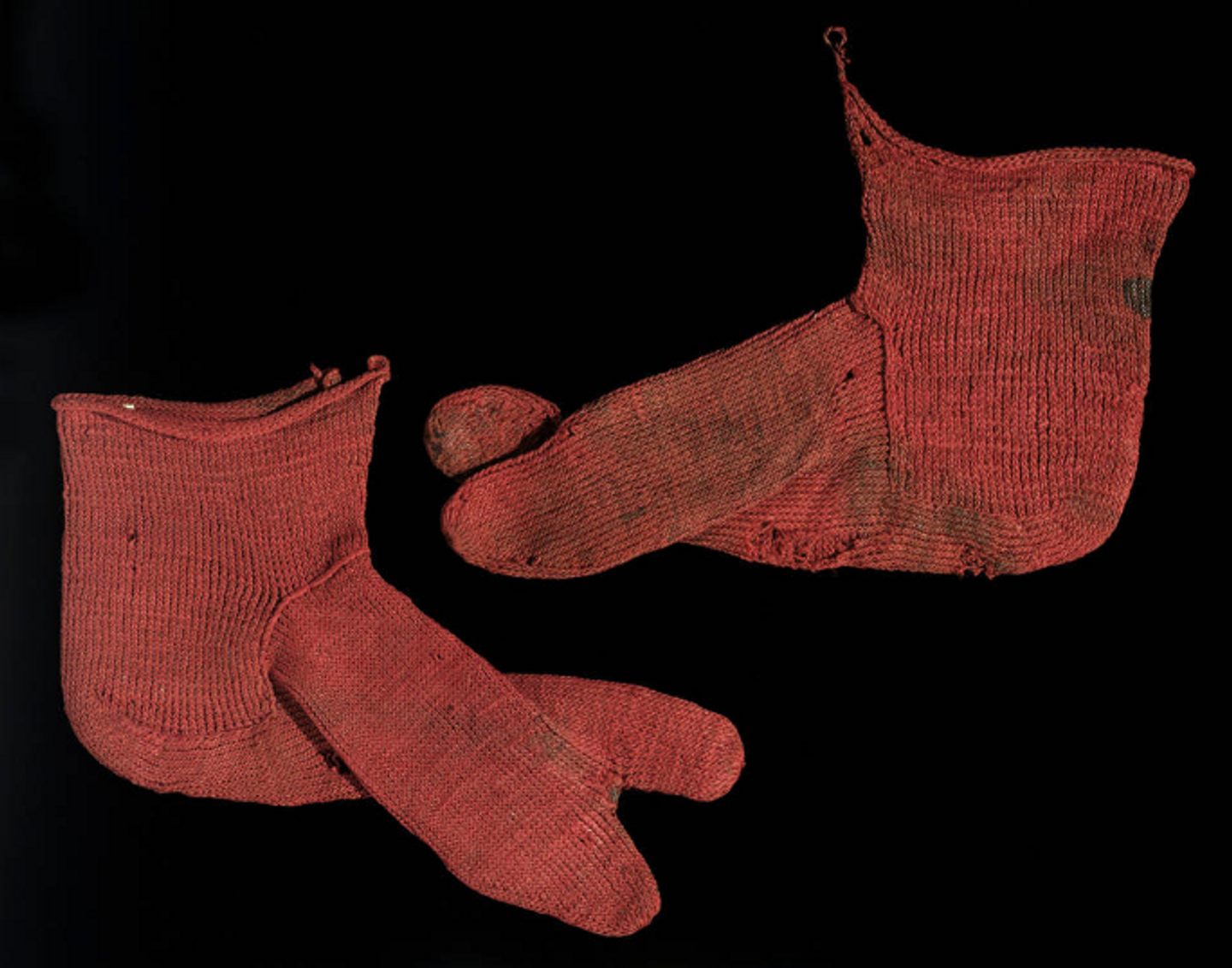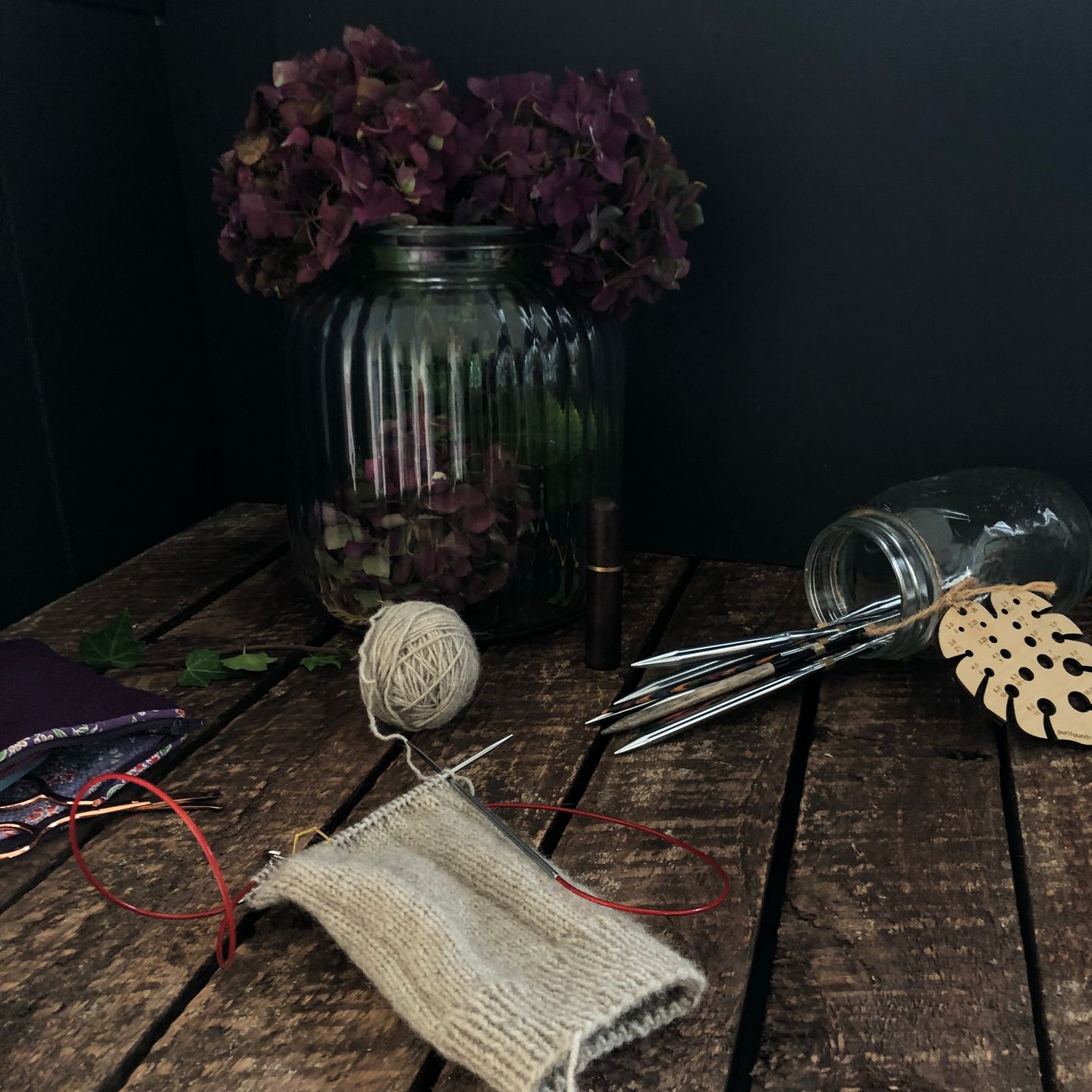The history of knitting
Who invented knitting and where did it originate?

Photo from the Victoria and Albert Museum website: https://www.vam.ac.uk/articles/the-history-of-hand-knitting
Knitting has a long history and unsurprisingly, it's pretty tough to link the origins with just one specific person but ancient examples discovered in Egypt and the Middle East give us a glimpse into its early beginnings. In fact, some of the earliest discoveries are dated at around the 3rd-5th century with surviving examples on display at the Victoria and Albert Museum in London. Here's what they say about an ancient pair of socks:
An early woollen item in our collection is a pair of socks from Egypt that date from the 3rd to 5th century AD. They have been made using the technique 'nålbindning', a laborious technique more akin to sewing than knitting, where yarn is threaded through the eye of a sewing needle and then worked in the round through a series of loops. Some believe that this technique was a forerunner of the faster method of knitting with two or more needles.
Nålbindning may actually be seeing a small resurgence recently as these tools become more readily available and makers look to expand their skillsets.
As with many crafts, knitting spread around the world through trade routes and cultural exchanges. Europe embraced the art during the Middle Ages, especially in the colder regions and the British Isles and it soon became an important skill in households.
Fast forward to the industrial revolution in the 18th and 19th centuries, where knitting experienced a huge leap forward. The invention of knitting machines brought about a new era of mass production, revolutionizing the entire textile industry. Suddenly, knitted and sewn garments became more accessible to the general population making warmth and style more attainable than ever before.
Hand knitting then experienced a huge boost during both World Wars. Knitting became a symbol of patriotism as women on the home front diligently crafted socks, gloves, and other essentials for soldiers at the front lines. Knitting patterns and instructions were widely distributed, building a sense of unity and support during those incredibly tough times. The following depression-era also meant that sewing, knitting and mending were essential skills in any home.

In the modern era, knitting has evolved into a more creative outlet, becoming a form of self-expression and relaxation. Knitting communities (both online and in person) have sprung up worldwide where people share techniques, patterns, and the joy of creating. While it's sometimes seen as a more expensive option compared with buying ready-made clothes, the materials used are often better quality and the garments are produced with confidence knowing that, at least for the garment creation, it's created in a humane environment. But as most knitters know, it's less about the finished garment and more about the experience of making something in a thoughtful and creative way. The rise of the Slow Fashion movement has also spurred a renewed interest in knitting as an antithesis to the Fast Fashion industry.
So, whether you're a seasoned knitter or someone who's never held a pair of knitting needles, the history and origins of this craft remind us of the enduring power of human creativity and our innate desire to put our hands and hearts to good use. Happy knitting!
